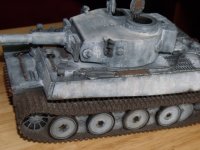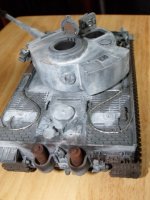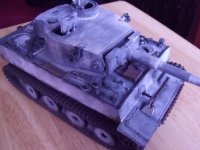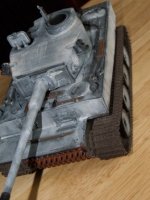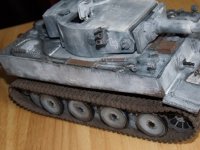Found this account in one of Jentz's Tiger books. 2/10 & 2/11 1943, two 503 Tigers supported a Kampfgruppe's attack on a farm to stem the Russian advance:
"The closer the Tiger approached the collective farm, the greater intensity of the enemy defensive fire. Each hit on the Tiger was accompanied by a sharp clang, a slight jolt, acrid clouds of smoke, a shimmering yellow flash, and a detonation.
The nerves of the crew were stretched thin. We paid no attention to hunger, thirst, or time. Even thought the attack lasted over 6 hours, at the time the crew thought that only a short time had elapsed.
After another 7.62 cm anti-tank shell struck the gun mantle, the brackets holding the gun snapped, the recoil cylinder began losing fluid, and the gun remained at full recoil. The shaking caused by additional hits damaged the radio, a gas tube, and the gear lever by the driver. The engine caught fire when the shield protecting the exhaust muffler was shot away, but the fire was rapidly extinguished.
An explosive charge thrown on top of the Tiger from the side was sensed as a dull explosion accompanied by heat and smoke enveloping the Tiger and the crew.
We counted 227 hits from anti-tank rifle rounds, 14 hits from 5.7cm & 4.5cm anti-tank guns, and 11 hits from 7.62cm guns. The right track and suspension were heavily damaged. Several road wheels and their suspension arms were perforated. The idler wheel had worked out of it's mount. In spite of all this damage, the Tiger still managed to cover an additional 60 kilometers under it's own power."
Lucky guys, because that Russian 5.7cm gun was a very potent weapon; much longer barrel than the Brit 6 pounder.
.....can you give us some close ups of the weathering and detailing as you proceed...Thank you Frank


